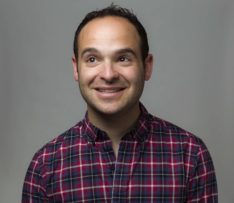Stop the skipping: Why programmers need to stop ignoring the ads
In this guest post, Corey Layton asks: with interruption-free services growing and the skip button ever-easier to push, when will the TV industry redesign its advertising strategy?
 Commercials. Be it skip or flick, it’s the key moment when audiences disengage. Yet that same moment is at odds with a programmer’s remit… keeping audiences engaged. So why aren’t those tasked with hooking audiences in, taking control to stop the skip?
Commercials. Be it skip or flick, it’s the key moment when audiences disengage. Yet that same moment is at odds with a programmer’s remit… keeping audiences engaged. So why aren’t those tasked with hooking audiences in, taking control to stop the skip?
These are the people that create, craft and commission the countless TV shows that hook each and every one of us in.
So what if these same specialists expanded their remit to achieve the same engagement across the ad breaks? As the primary revenue stream for networks, shouldn’t it be the primary point in the schedule that programmers are actively involved in too?
My last article ‘Podcast Pioneers‘ demonstrated how podcasters have cracked the commercial model, creating advertising that audiences choose to engage with. Though audio is a vastly simpler medium to shift, requiring less time, resource and cost to evolve, the immediate need for TV networks to rethink the model is reflected in the ratings downward trend.


Channels have been doing this for 20 years.
“So what’s holding traditional programmer’s back? Focus.” – More likely, judging by the apostrophe, their chair…
I too saw Wojcicki’s claims.
I also read this article.
http://www.mediapost.com/publi.....ersus.html
Please note the insertion of the two words “on mobile”.
Some are their own worst enemies.
The few shows that people *may* pay some attention to the ads bite the hand that feeds them.
So many reality show hosts encourage their views to hop onto social media during breaks and comment – what a slap in the face for advertisers that have paid big bucks.
The days of the long ad breaks must be on their last legs – I know I zap through the ads by recording ahead – and like most people do something else like look at the computer *if* on the rare occasions I’m watching live – and I never watch free-to-air movies.
Netflix has taught us that they are meant to be watched without constant annoying interruptions.